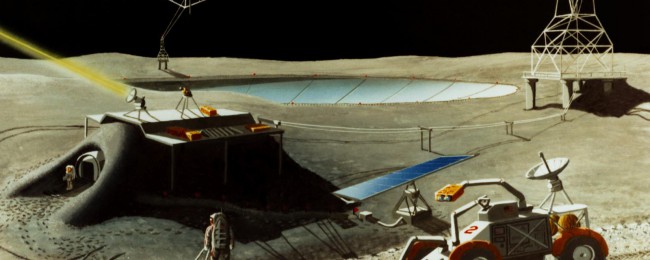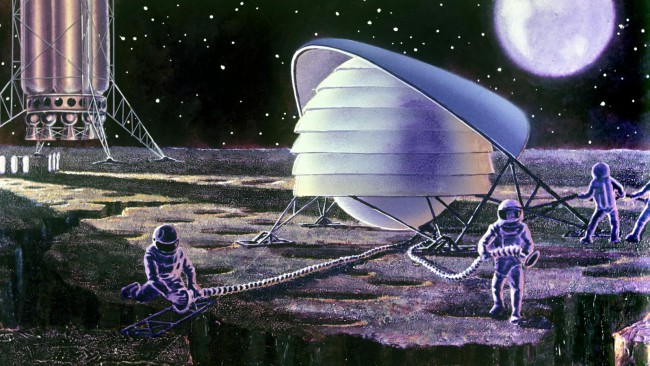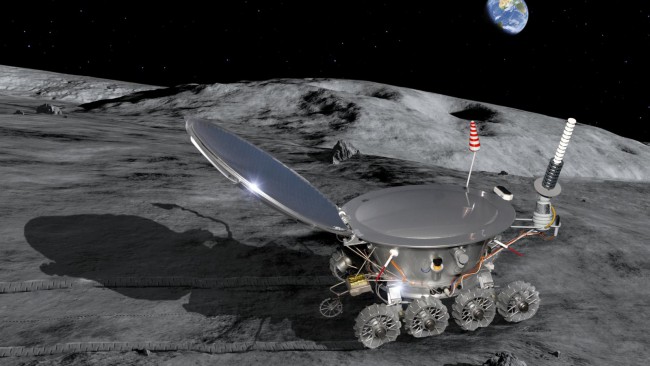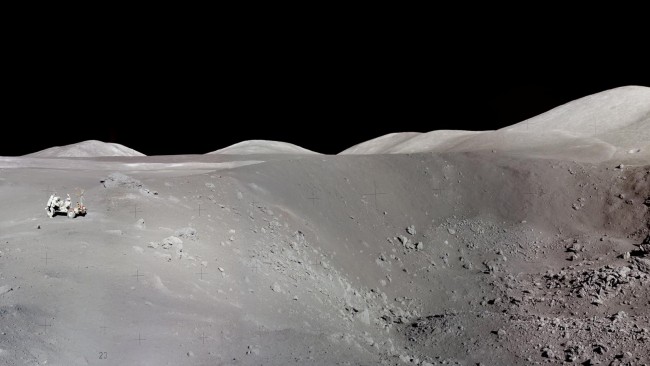
The coldest place on Earth and are close to the temperature of the lunar night — and to create a database that will be able to protect the settlers from such temperature, is not easy. For many decades the thought of colonizing the moon excited scientists and visionary people. On TV screens and monitors appeared various concepts of the lunar colonies.
Perhaps a lunar colony would be the next logical step for humanity. It is our closest neighbor star, which is some 383 000 kilometers from us, which simplifies support resources. In addition, in the moon in excess of helium-3, an ideal fuel for thermonuclear reactors, which on Earth is very small.
The route to a permanent lunar colony theoretically sketched different space program. China has expressed interest in placing a base on the moon. In October 2015, it became known that the European space Agency and Roscosmos are planning a series of missions to the moon, to evaluate the possibility to host permanent settlements.

However, our satellite has a number of problems. One revolution of the Moon makes the earth for 28 days, a lunar night lasts 354 hours — over 14 earth days. Long night cycle means a significant decline in the temperatures. The temperature at the equator varies from 116 degrees Celsius during the day to -173 degrees at night.
A moonlit night would be shorter if you place a base on the North or South pole. “There are many reasons to build a base at the poles, but it is necessary to take into account factors other than hours of sunlight,” says Edmond trollop, engineer space operations at Telespazio VEGA Deutschland. As on Earth, at the poles can be very cold.
At the lunar poles the Sun will move along the horizon, not the sky, so you have to build side panels (walls) which would complicate the construction. Large flat base at the equator collects a lot of heat, but heat at the pole, will have to build up, and that’s tough. “When wisely chosen location, the temperature difference can be easily controlled,” says Volker Maiwald, scientist German aerospace center DLR.
The wide variability of temperatures in the cycle of day and night means that you have to provide a lunar base is not only sufficient insulation from the chilling cold and searing heat, but also to cope with thermal stresses and thermal expansion.
Thermal protection
The first robotic mission to the moon, like the Soviet missions to the Moon were designed to go one lunar day (two earth weeks). The landing modules of the NASA Surveyor missions could resume work on the next lunar day. But the damage done to the components during the night, often not allowed to obtain scientific data.
The Rovers of the Soviet space program of the same name, which was held at the end of the 60-70-ies, included the radioactive elements heating with a sophisticated ventilation system that allowed the vehicles to accommodate up to 11 months. Rovers have hibernated at night and run with the sun, when the available solar energy.

One option to avoid high thermal vibrations is to bury the building into the lunar regolith. This powdery material that covers the moon’s surface, has low thermal conductivity and high resistance to solar radiation. This means that it has a strong insulating qualities, and the deeper the colony, the higher thermal protection. In addition, since the base will be heated and the heat is transmitted poorly on the moon because of the lack of atmosphere, this will further reduce thermal stress.
However, although the idea of “bury” the colony, in principle, has been adopted successfully, in practice it would be incredibly challenging. “I have not yet seen a project that would be able to cope with this,’ says Volker. — I’m guessing it will be a robotic building machine that can be controlled remotely”.
To hit or cover?
Another method by which it was possible to achieve the desired result lies in the earth itself. Penetrators capable of penetrating the surface in the strike, has already been proposed (but on a smaller scale) for several lunar missions, like the Japanese Lunar-A and British MoonLite (currently the project is postponed, although the idea of planting the penetration was so convincing that ESA has decided to use its mechanism for the rapid delivery of samples for analysis from the surface and popularnosti planet or moon). The advantage of this concept is that the base buries itself in the collision, and thus will undergo relatively moderate thermal conditions before will be protected.
Nevertheless it will remain a problem with supply of energy as a typical project with the penetration offers only very limited opportunities for using solar energy. There is also the problem of high acceleration loads during collision and high precision required for pointing. “This type of impact necessary to bury the structure, it will be very difficult to reconcile with the necessary functions of a manned base,” says trollop.

An alternative to this solution would put the lunar regolith on top of the colony, perhaps using machines such as hydraulic excavators. But to do this effectively, you have to work quickly.
If the lunar regolith will not work pour into the colony, then above it is possible to deploy a “hat” multi-layer insulation (MLI), which will prevent the dissipation of heat. MLI insulation materials are widely used in spacecraft, protecting them from the cold of space.
The advantage of this method is that it allows you to use arrays of solar panels to collect and store energy during the two-week lunar day. But if there wasn’t enough energy, will have to consider alternative methods of energy generation.

Thermoelectric generators could provide the colony with energy during the night cycle when its low efficiency however, they do not have maintenance problems because they do not have moving parts. Radioisotope thermoelectric generators (RTGs) offer higher efficiency and have a very compact fuel source. But the base will be shielded from radiation, while allowing it to transfer heat. The logistics of installing a generator with removable radioactive isotope is full of challenges: the risks are all the way, from takeoff from Earth to landing on the moon, along with the issues of politics and security.
You could use reactors and nuclear fission, but they will be even more problems, including those listed above.
But if will be developed thermonuclear reactors, they also can be used on the moon, given the abundance of helium-3. May also be useful for batteries like lithium-ion — provided there is sufficient solar energy generation for the two weeks of night cycle.
There is an idea to provide energy to the station on the surface during the night cycle with the help of an orbiting satellite, which will transmit the energy via microwave or laser. The study of this idea was conducted 10 years ago. The study revealed that for a large lunar base, requiring hundreds of kilowatts of power, supplied from orbit 50-kilowatt laser, rectenna (type of antenna that converts electromagnetic energy into direct electric current) will be 400 meters in diameter, and the 5 square kilometers of solar panels. On the International space station about 3.3 sq km of solar panels.
Despite considerable difficulties in the construction of the colony, which will have to withstand the harsh lunar night cycle, they are not insurmountable. With adequate thermal protection and the corresponding system energy production during the two-week long night, we can get a lunar colony within the next twenty years. And then we can turn our eyes away.
